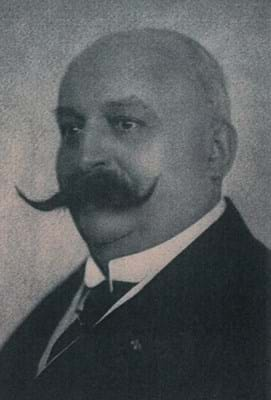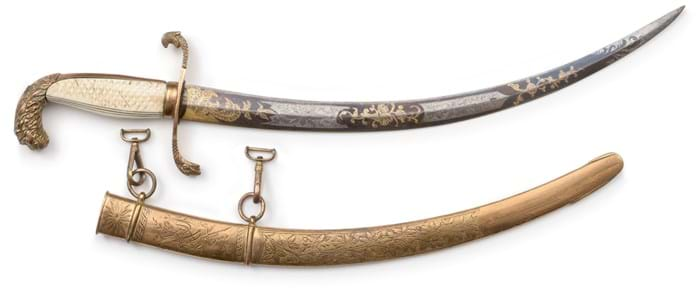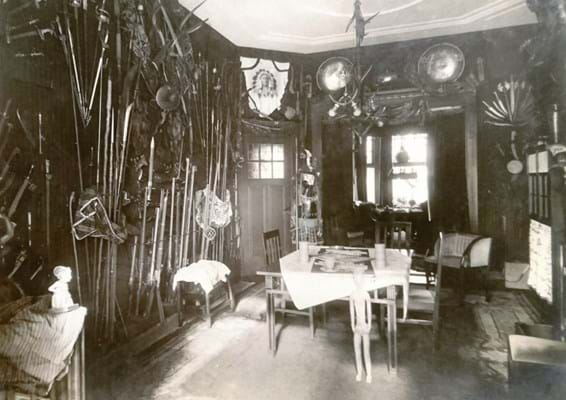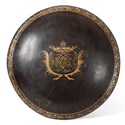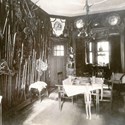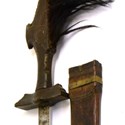Both militaria and ethnographica are proving two of the most popular collecting fields at auction and dealerships, as evidenced regularly in Antiques Trade Gazette. While not producing many huge, stand-out prices generally, demand is strong and steady.
Many auction houses now have dedicated sale sections and indeed specialist sales covering this market. Tennants’ recent single-owner auction of the P Lamaison Van Heenvliet Collection of Arms and Armour on September 29 was a good example. It also underlines the number of consignments coming through to regional auction houses relating to this market.
After studying law, Lamaison (1857-1941) became council secretary of the Rotterdam borough of Kralingen. An excellent civil administrator, he rose up to be the city’s chief tax collector and financial expert, being awarded the Order of Orange Nassau.
Lamaison lived in Rotterdam where he displayed his extensive collection. According to Tennants, this “very charismatic character” was well connected among Dutch society.
While some tribal art collectors amass their items after a career in business or the military, for example, that took them to the colonies, Lamaison was reliant on his connections.
“Among his circle of friends were diplomats, colonialists and merchants, who helped him build his extensive collection by sending him exotic items from their travels around the world. With spears, clubs, shields, guns and knives from far-flung corners of the globe, the collection is an extraordinary record of not only tribal and military artefacts, but of one man’s dedication to his interests”.
As regards why a Dutch collection came to be consigned to a North Yorkshire auction house, Tennants said it was sold by a descendant who is from the north of England.
Fresh to the market
The sale made a hammer price total of £84,920 with 99% of the 177 lots sold. Buyer’s premium was 18.5% plus VAT.
Tennants’ specialist Oonagh Drage said: “Private collections with provenance always appeal at auction, and this sale was no exception. With all lots ‘fresh to the market’ and many rare pieces, it was a tempting sale for collectors. International interest was certainly piqued, and over a quarter of buyers came from overseas.”
The top lot of the sale was a Japanese 17th century Edo Period black lacquer shield painted with a coat of arms and monogram, which had attracted much interest before the sale. Multiple bidders in the room, online and on the phones battled over this rare item, driving the bidding up to a final hammer price of £6200 against an estimate of £1000-2000. It sold online to the UK trade.
Another lot hailing from Japan sold at £4800 (estimate £4000-6000): an 18th century Edo Period suit of armour from the Tokugawa clan, the powerful Japanese family and the last to rule as Shoguns or military rulers in the 18th century.
Highlights of the Western arms on offer included a Colt Model 1855 Revolving ‘British’ percussion carbine, which sold for £4200 (estimate £2000-3000) to a UK collector via a commission bid, and an early 19th century naval dirk bought for £3000 (estimate £400-600) by a European phone bidder. The dirk had a 9.5in (23.5cm) single-edge curved blued steel blade, engraved and gilt.
Among the ethnographica from south-east Asia and the South Pacific, a Moro Kampilan, complete with tufts of human hair, from Sulu in the Philippines, sold for £1500 (estimate £100-150) on the phone to the UK trade. This single-edged sword had a 2ft 4in (72cm) long steel blade.
An Indonesian 19th-20th century carved wood Hampatong type figure of a woman sold for £1300 (£300-500) to an online bidder from Australia , while a 19th century Fijian pole club took £1100 (estimate £500-800).
Further reading
Tribal sales at auctioneers Woolley & Wallis of Salisbury and John Nicholson’s of Fernhurst feature in this week’s ATG (No 2313, now available for digital subscribers).


